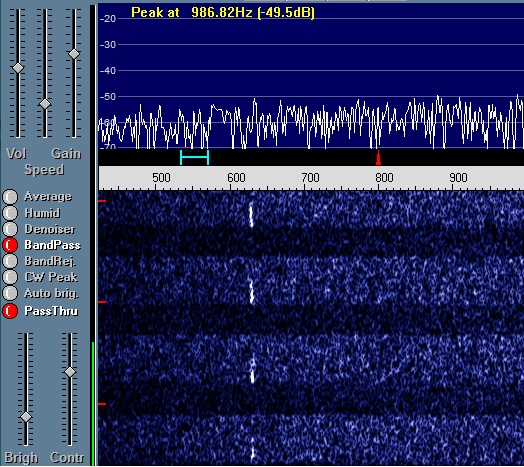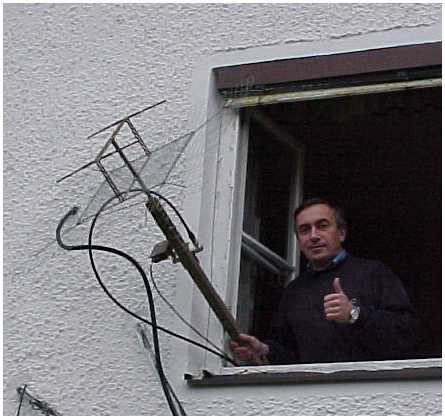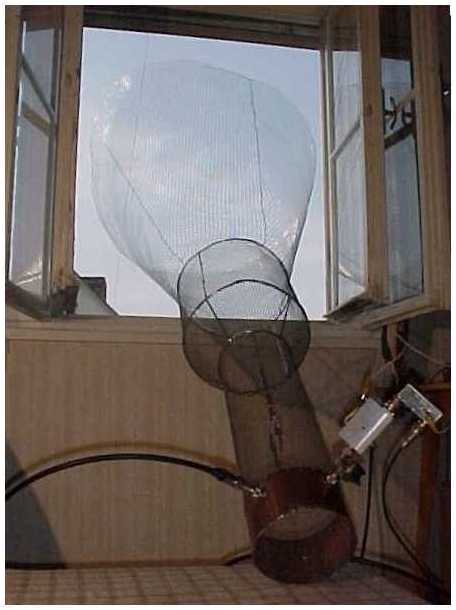For me it was always very interesting to learn what minimum equipment is needed to make EME QSOs, especially on 23cm. I extended a W2IMU feed made of 6mm mesh by adding a large cone, achieving a horn antenna with 80cm mouth diameter. Estimated gain is 19dBi, maybe slightly less.
A spare 80W SSPA was used for the transmit side. Together with the horn I got 49dBm+19dB=68dBm EIRP.
On the receive side a cavity preamplifier with a MGF4919 was used.
23cm horn antenna with 80cm diameter
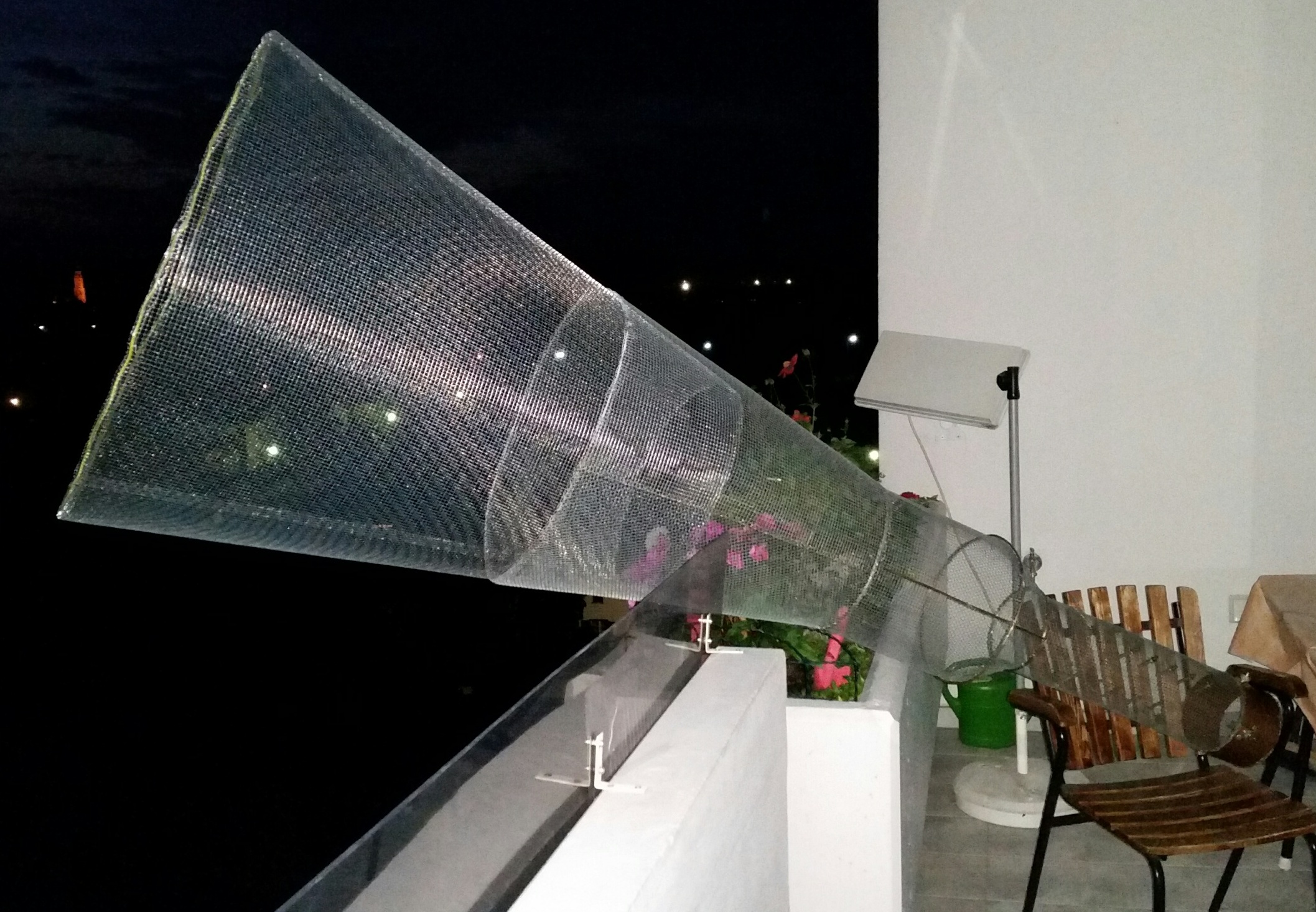
listen to the reception of ON0EME
First tests were made in combination with my 7.3m offset dish. I was transmitting with the dish, reducing transmit power step by step down to 10W. At this level I still could occasionally see traces of the echos on Spectran waterfall.
Next was receiving the beacon ON0EME with the horn antenna. The signal was found immediately, clearly visible on Spectran and WSJT, audible most of the time when it transmitted carrier. CW was not readable, only sometimes a letter or fragments. The level in WSJT was between -20 and -22dB, on occasion -19dB. Probably I loose 1dB or 2dB due to some extra noise pickup because of the broader lobe.
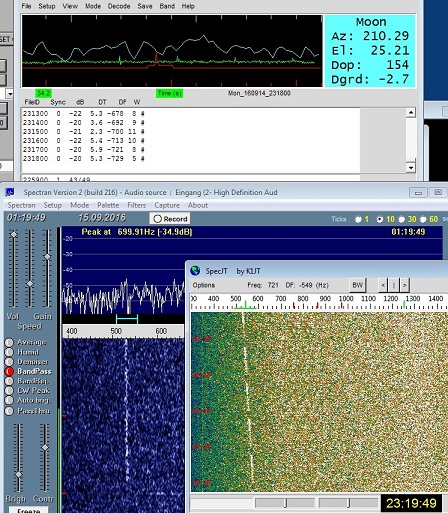
Measuring echo strength with different antenna combinations
Weak but traces detectable: echos at my 3m dish when transmitting with 80W at the 80cm horn
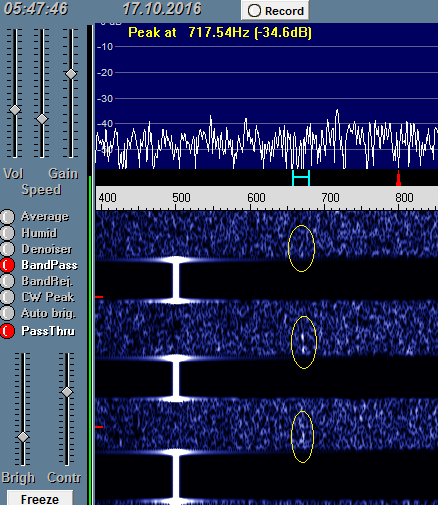
Next: transmitting again with 80W into the horn, receiving with 7.3m offset dish
audio in SSB bandwidth: echo horn 80W to 7.3m dish
audio in CW bandwidth: echo horn to dish filtered
Finally: transmitting with my 7.3m dish and full power, receiving with the 80cm horn
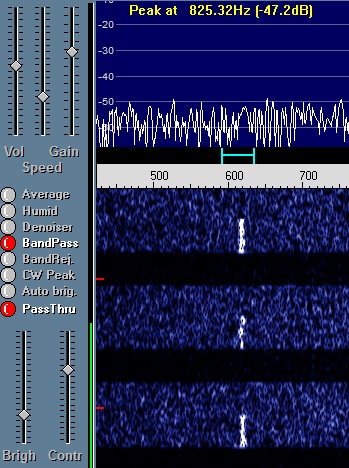
SSB bandwidth: echo 7.3mdish to 80cm horn
CW bandwidth: 7.3m dish to horn filtered
Testing echos was good to learn what is possible with such a small station, and it was also nice to confirm previously made calculations. But making QSOs with that setup was another challenge.
During the 2016 ARRL EME contest I worked within a couple of hours on Oct 22nd several stations in WSJT using the 80cm horn antenna and 80W, all random:
0646 HB9Q (-9 -21), 0658 UA4HTS (-12 -22),
0709UA3PTW(-13 -19), 0746RA3AUB(-20 -24),
0811 DF3RU (-20 -?), 0831 OK1KIR (-17 -23)
I did not use deep search and deleted call3.txt. HB9Q has a 10m dish, all the other stations I worked have dish size around 6m. As we can see from the receive reports between -12 and -20 for them, it should be possible to decode stations using a 3m dish and good power.
I even copied several big guns in CW.
Two of them I recorded:
